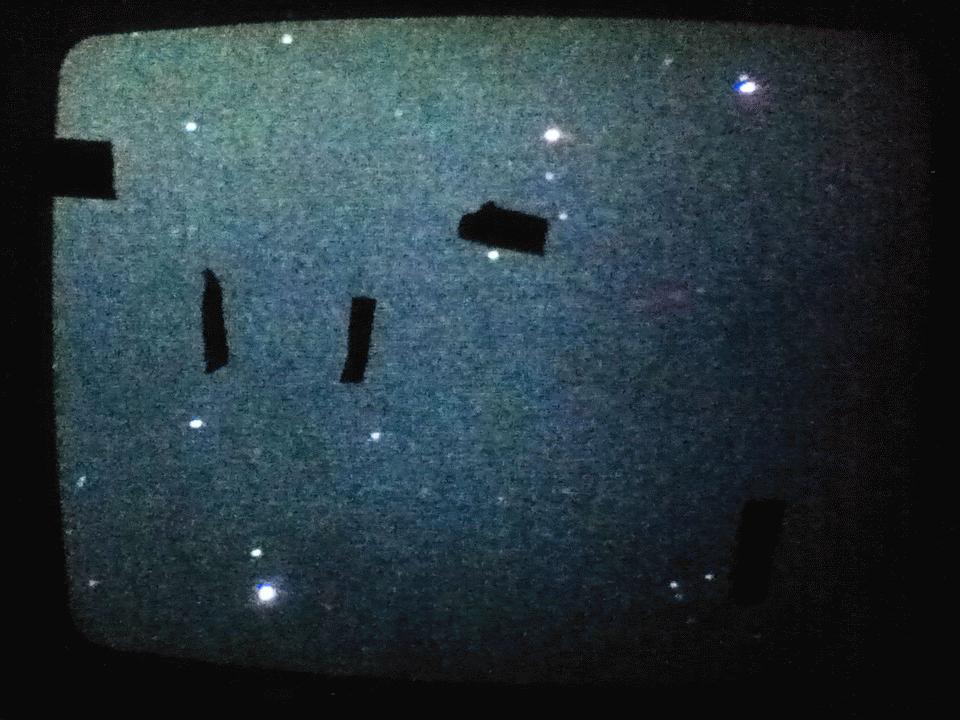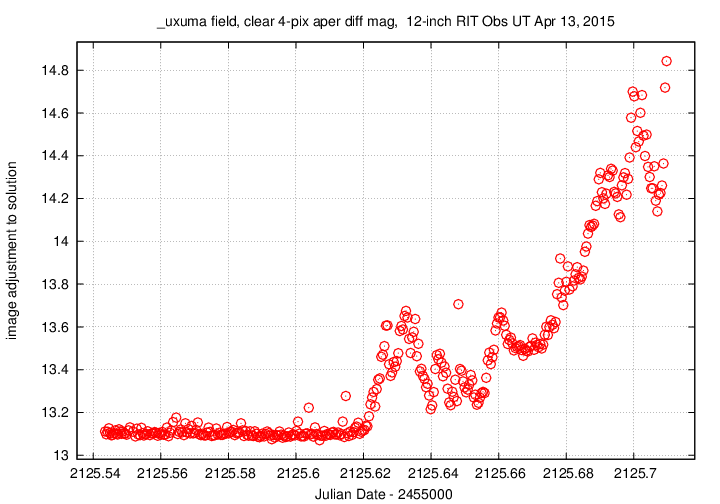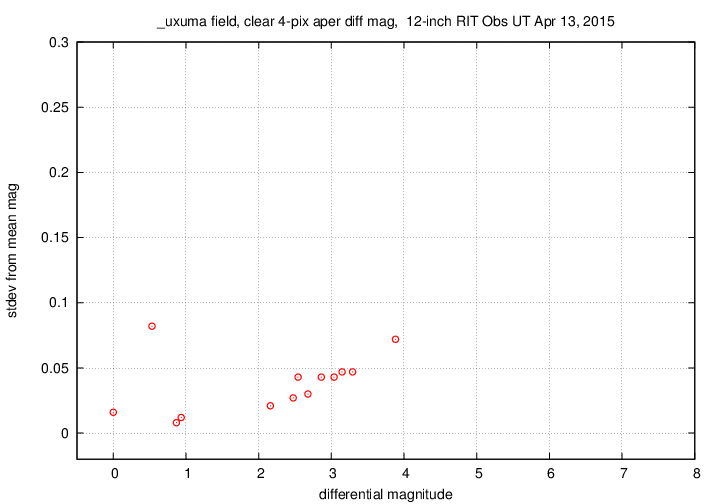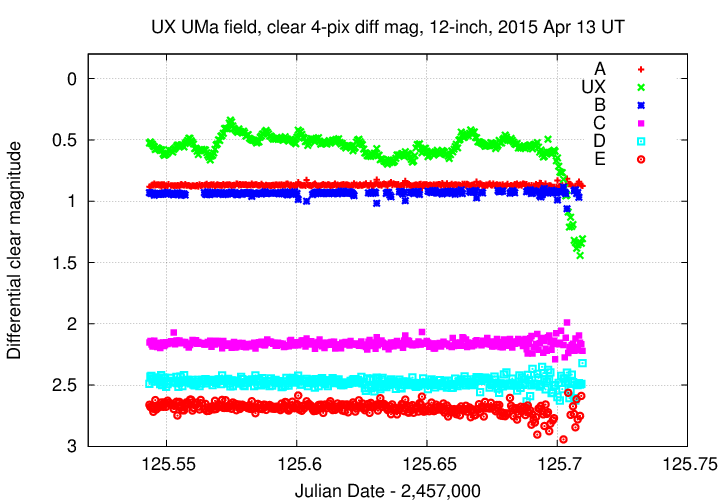
On the night of Apr 12/13, 2015, I observed the cataclysmic variable star UX UMa. It showed flickering variations during my run, and reached the bottom of an eclipse at the very end.
You can read more about this star at
The main setup was:
Notes from the night
Below is a graph showing the sky brightness as a function of time during the observing run. Note the clouds in the second half.

Below is a graph showing the FWHM as a function of time during the observing run. The telescope gradually became defocused as the temperature dropped, but I didn't notice. Whoops.

Here's a chart of the field of UX UMa which is at
RA = 13:36:41.0 Dec = +51:54:49 (J2000)
The brown box shows the rough size of the CCD during these measurements.

One of the reference stars marked above has photometry measured by the AAVSO, in their chart 14702AHO. I used this star to convert the instrumental magnitudes to the V-band scale (though of course, they are unfiltered measurements)
A = 000-BBT-788 = UCAC44 710-053537 V = 13.497
The television camera on the finder scope shows the following when we're pointed at UX-UMa. North up, East left, field about 1 degree on a side. The two pieces of tape in the upper-left corner show the location of the center of the CCD field, very roughly. The bright star near the bottom is HD 118557.

I used 30-second exposures during this observing run. The target was not close to being saturated -- typically 2000 - 4000 counts/2, so the exposure time could be doubled without worry.
The image adjustment factor graph shows a relatively smooth curve until the clouds arrived.

Using aperture photometry with a radius of 4 pixels (radius of 5.7 arcsec), I measured the instrumental magnitudes of a number of reference stars and the target. Following the procedures outlined by Kent Honeycutt's article on inhomogeneous ensemble photometry, I used all stars available in each image to define a reference frame, and measured each star against this frame. I used the AAVSO V-band magnitude of star "A" to convert the ensemble instrumental magnitudes to a reported "V"-band magnitude (but remember, it's a clear filter).
Sigma-vs-mag plot: The brightest star is the one labelled "P" in the chart above; it wasn't saturated, but fell so close to the corner of the chip that it fell on and off from frame to frame. The second-brightest star is UX UMa.

The target, shown in green, shows lots of variations, even before the eclipse at the very end of the run.

# Measurements of UX_UMa made at RIT Obs, Apr 13, 2014 UT, # in mediocre conditions, # by Michael Richmond, using 12-inch Meade and SBIG ST-9E CCD. # Exposures 30 seconds long, no filter. # Tabulated times are midexposure (FITS header time - half exposure length) # and accurate only to +/- 1 second (??). # 'mag' is a differential magnitude based on ensemble photometry # using a circular aperture of radius 5.7 arcseconds. # which has been shifted so UCAC4 710-053537 has mag=13.497 # which is its V-band mag according to AAVSO chart 14702AHO. # # UT_day JD HJD mag uncert Apr13.04350 2457125.54350 2457125.54633 13.156 0.011 Apr13.04387 2457125.54387 2457125.54670 13.145 0.011 Apr13.04425 2457125.54425 2457125.54708 13.160 0.010
Last modified 4/13/2015 by MWR.